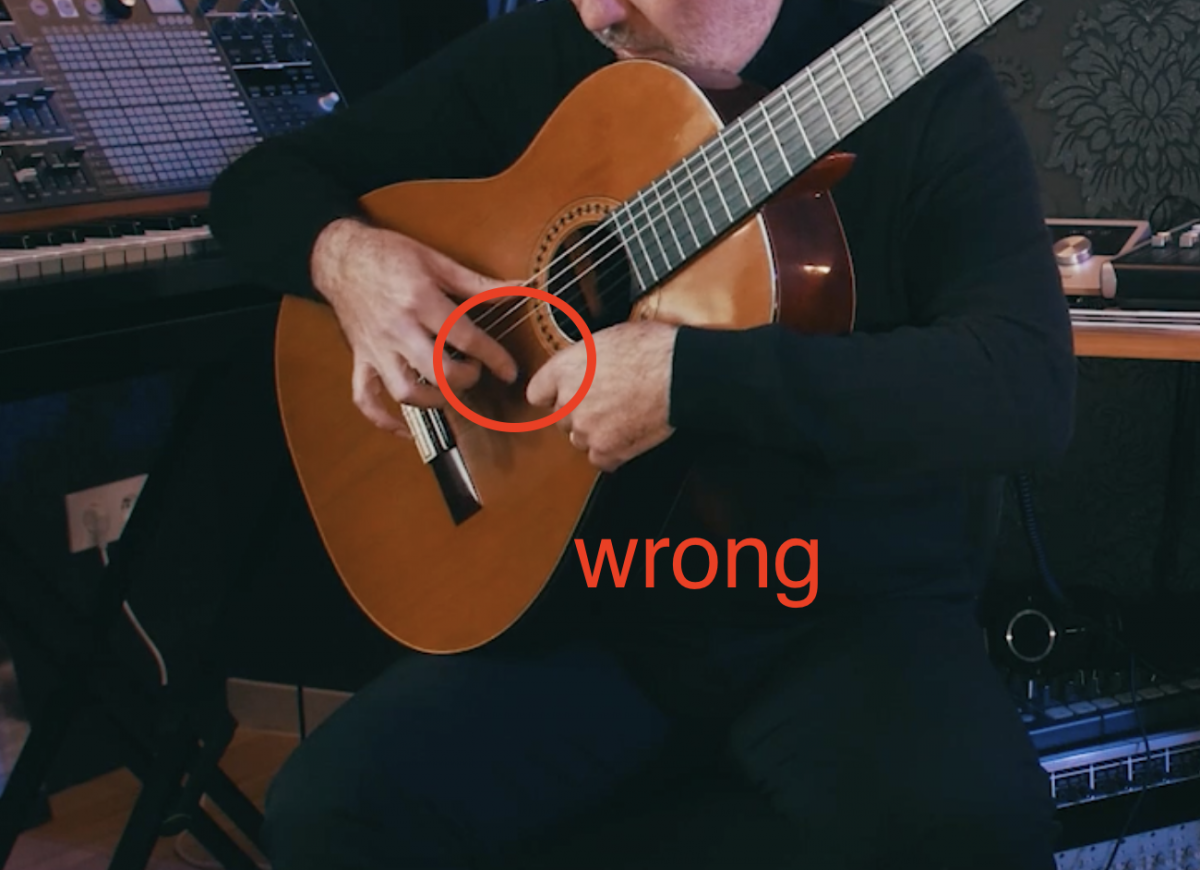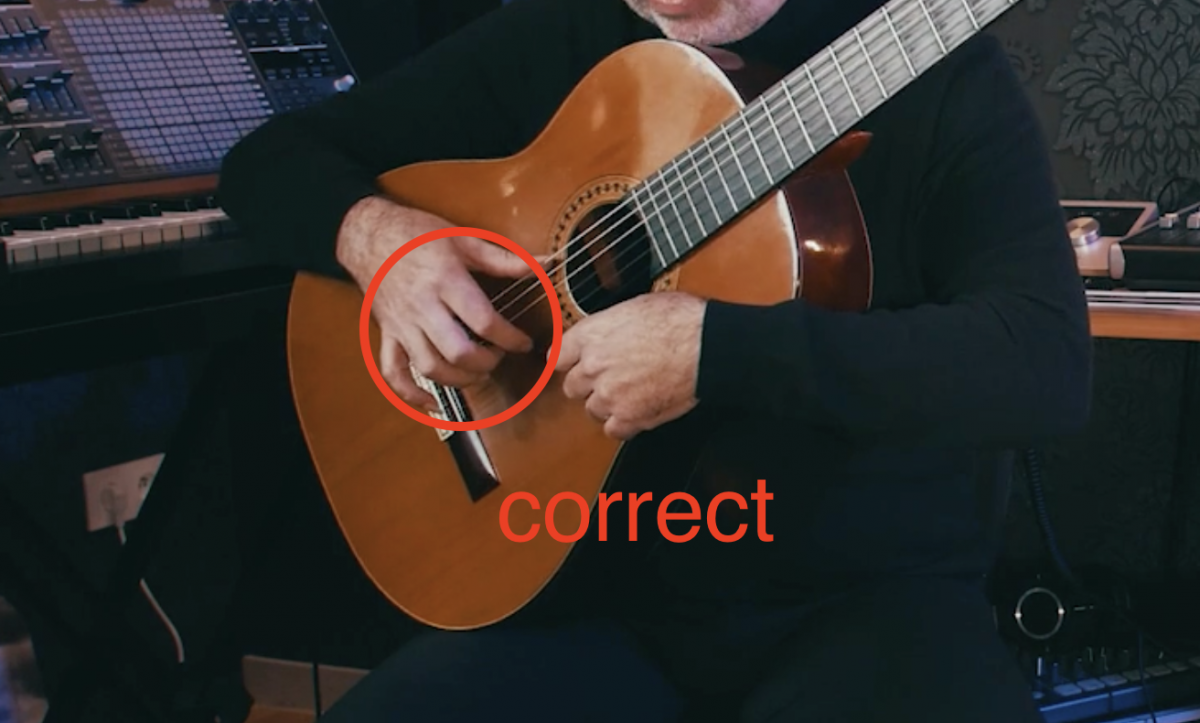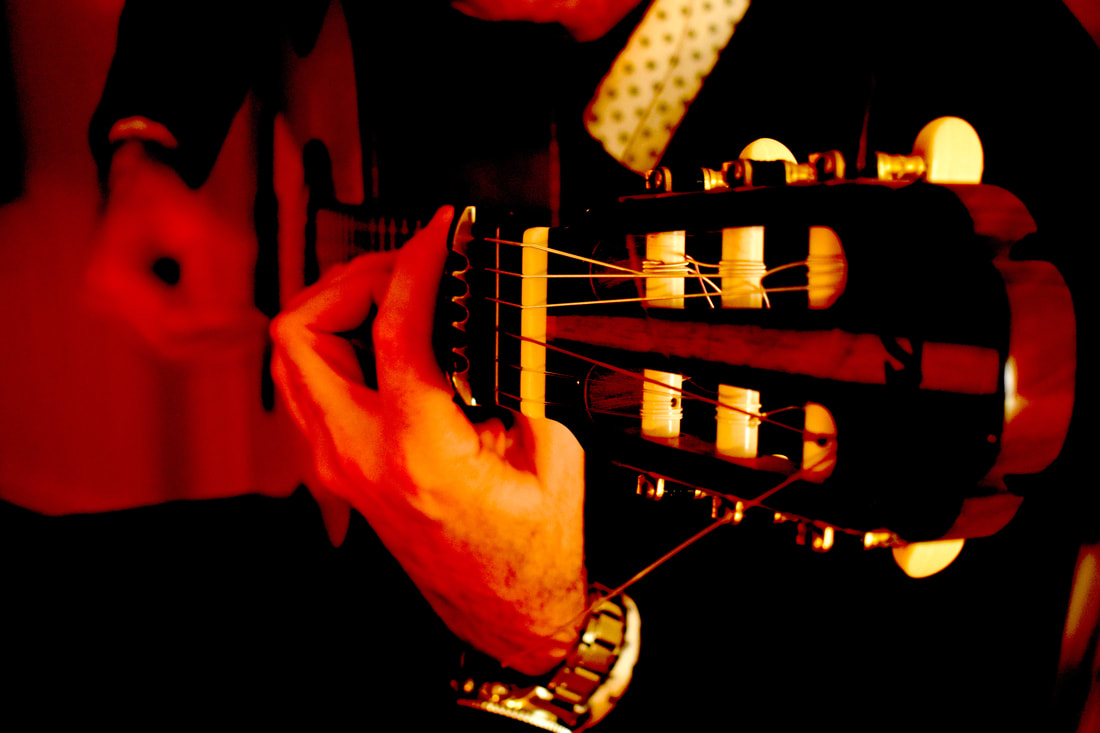Picado is a form of right hand technique used in flamenco which involves a single finger striking a string, not dissimilar to a hammer striking a string in the piano.
As many people get the picado wrong by bending their finger flat, review the above video to see what it should really look like.
To be able to blast through scales at speed – which is the aim for most guitarists deep inside – requires getting the technique correct and efficient. In the context of flamenco it also requires the correct hand nails. So slow it down!
As Rafael says: if you look from the side, the movement should come from your knuckle – as if your fingers are the hammers of a piano.
Keep a little bit of tension in your finger joint, so it does not bend – creating a harder, percussive sound. You do not want your finger to be flat, as the screenshot below shows, which is a common mistake.


Keep your finger slightly stiff or with 'resistance', then move it from the knuckle joint to avoid the movement coming from the bend of the finger.
In the video above Rafael is doing rest strokes, where, after striking, he rests his finger lightly on the string above. But this is not necessary – and for techniques such as the tremolo you would not want to do this (for an example of the picado being used for the tremolo without rest strokes, see the below video).
You can practice by going up and down the strings, alternating or 'walking' between your index and middle finger.
Note for the picado to work effectively, you will need your nails properly filed – which we discuss here on flamenco nails.
Learn from a Master Who's Performed for Royalty: Start Your Flamenco Journey Today
- Unlock this article & video library for free
- Join thousands of guitarists who finally got past only 'knowing some basic chords'
- Learn flamenco from a lifelong performer & celebrity teacher from Madrid
- Rafael has taught EOB (Radiohead), Jack Peñate & played for HRH Elizabeth II (etc)
By entering your email you agree to receive email updates from Flamenco With Rafael. See our Privacy Policy.




